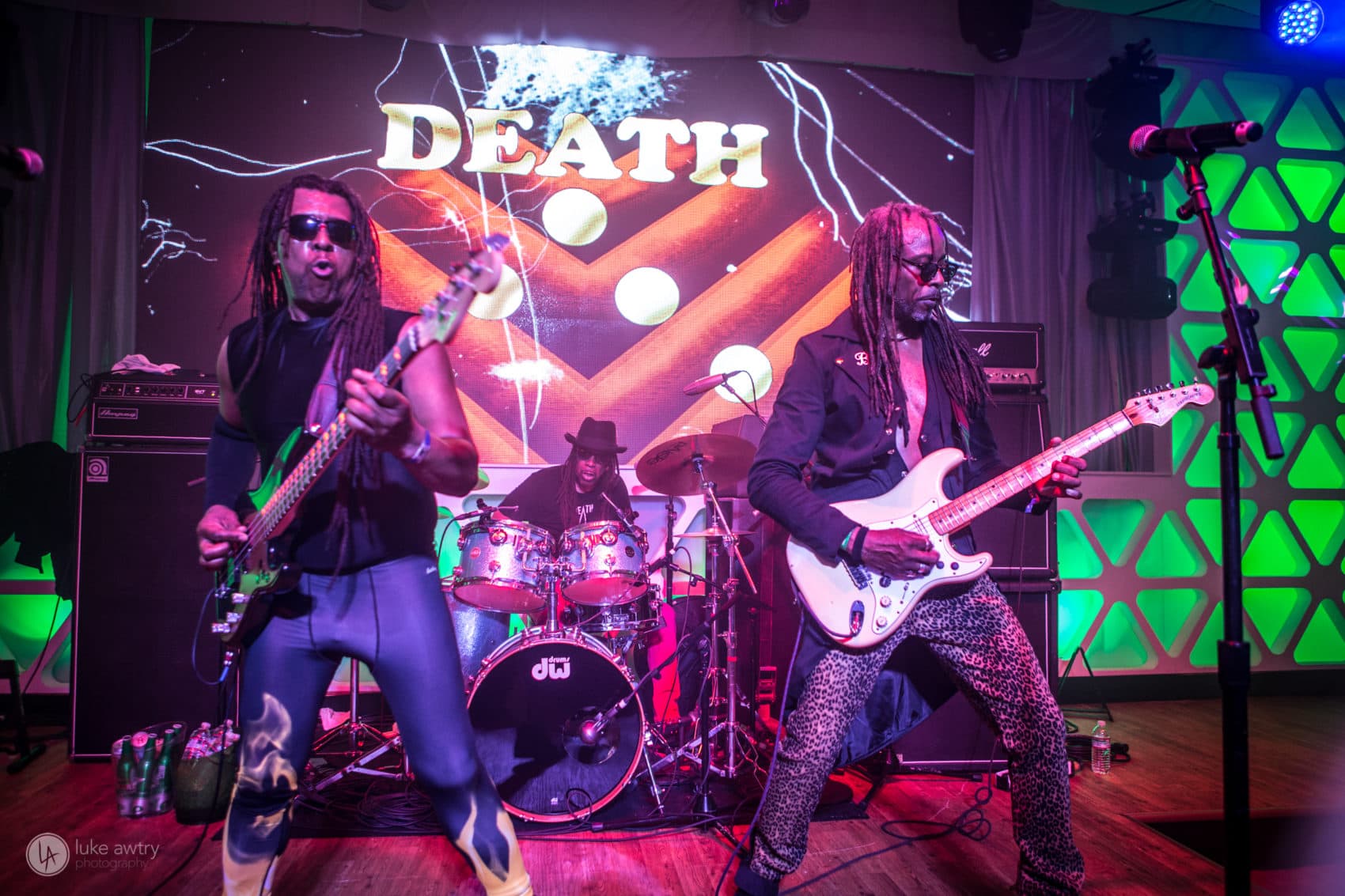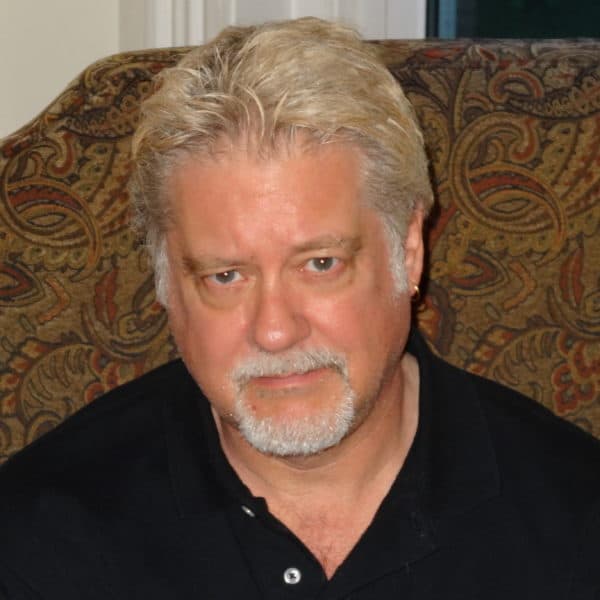Advertisement
A Resurgent Death Relishes Its Afterlife

For a long time, no one wanted to deal with Death.
Not death as in the end of life, but Death the band.
A hard rocking trio from Detroit that emerged during the mid-1970s — reminiscent of MC5, Iggy and the Stooges and Alice Cooper — Death struggled to find an audience.
Singer-bassist Bobby Hackney recalls one of those rare gigs, at a VFW hall down the street from the Chrysler plant in Detroit, where many of the workers went to unwind.
“Looking back on it, it’s the Death show that every fan would have wanted to see, but was played for the most unappreciative crowd," Hackney says. "Every time we came to the rock ‘n’ roll crescendo at the end of a song, you’d just hear silence."
"We were playing ‘Freakin’ Out.’ We were doing the splits! I was down on my knees, and we stopped and you could hear a pin drop," he says. "Finally, this old guy saunters up and says, ‘You’re too loud’ and then he walks back to the table.”
Fortunes have changed. Death formally disbanded in 1980, but is enjoying a curious and prosperous afterlife in the 21st century. They kick off a nine-date East Coast tour at ONCE in Somerville April 18, with the Rhode Island band minibeast opening.
But back then, gigs were few and far between.
Part of that was a disconnect between their look and their sound. The band was all-black, comprised then of three Hackney brothers: bassist and singer Bobby, guitarist David and drummer Dannis. It was not the kind of music black audiences — or for that matter white audiences — expected or wanted to hear from a black band. It was not funk, soul, R&B or jazz.
“My oldest brother Earl called us ‘white boy music,’ says Bobby Hackney, with a laugh.
The guys in Death were in their early to mid 20s. They were represented by legendary songwriter and Groovesville Productions CEO Don Davis. Hackney says Davis would bring a briefcase of master tapes from artists he worked with to major record labels in New York and Los Angeles. Davis had a good relationship with Arista boss Clive Davis (no relation), having delivered a hit single with Marilyn McCoo & Billy Davis Jr. Clive liked what he heard on the Death’s seven-song tape, but balked at the band’s moniker.
Brother David had an answer : "Tell Clive Davis to go to hell."
“We had a concept around it,” Hackney says. “Maybe we were young and cocky and it might have just been the rebel spirit in all of us, but especially in David. The name meant so much to him. He saw the shock value and thought the music was good enough so that if Clive Davis didn’t like it, maybe somebody else would and we would get another deal.”
That didn't happen -- until 2009, when the indie label Drag City picked up the tape and released the album, “For the Whole World to See." Death suddenly became an out-of-the-blue, underground proto-punk sensation from yesteryear.
David Hackney didn't live to see it. He died of cancer in 2000. Before that, he and his brothers had mutated into a gospel rock group, The Fourth Movement, then created a Sly & Robbie-inspired dub reggae band, Lambsbread, with guitarist Bobbie Duncan, which often played the now-defunct Cambridge club the Western Front.
But Death came calling, especially after the release of the 2012 documentary, “A Band Called Death.” And within the last few years, Drag City has released more of Death's old material from the '70s — including LPs “Spiritual * Mental * Physical” and “Death III." The latest album, “N.E.W." was released in 2015.
“We’re getting invited to places like Amsterdam, European tours, Mexico, Brazil, " Hackney says. "Touring becomes a whole different beast. Everybody wants to see Death, so we just decided the whole show would be Death giving people realistically what they want.”
Death hurled out these fierce and ferocious songs, some with political bite. And the fact that this came from a black band, somewhat upended the tenet that the punk rock that sprang up in the 1970s was an all-white eruption.
“In retrospect,” says Hackney, “when we heard the music for the first time in so long, we looked at each other and said, ‘Compared to the punk music as we know it today, we can actually understand why people would equate it with [punk rock].”
Death’s latest single is the environmentally conscious “Give It Back,” written by David and Bobby back in the '70s. It's a vintage song, with current pertinence. The "N.E.W." album — more expansive than the band's early proto-punk style — is made up of a stockpile of songs they’d previously written, with newcomer Duncan writing several others.
“Everything was inspired by the new Death movement,” Hackney says. “We’re just trying to show dimension while we pay homage to and due respect to the historical Death from Detroit. I’ve had rock historians who told me they consider [the first album] the Mona Lisa. So, we always respect the Mona Lisa and in concert we try to play everything from it. We know what the audience has come to hear.”
